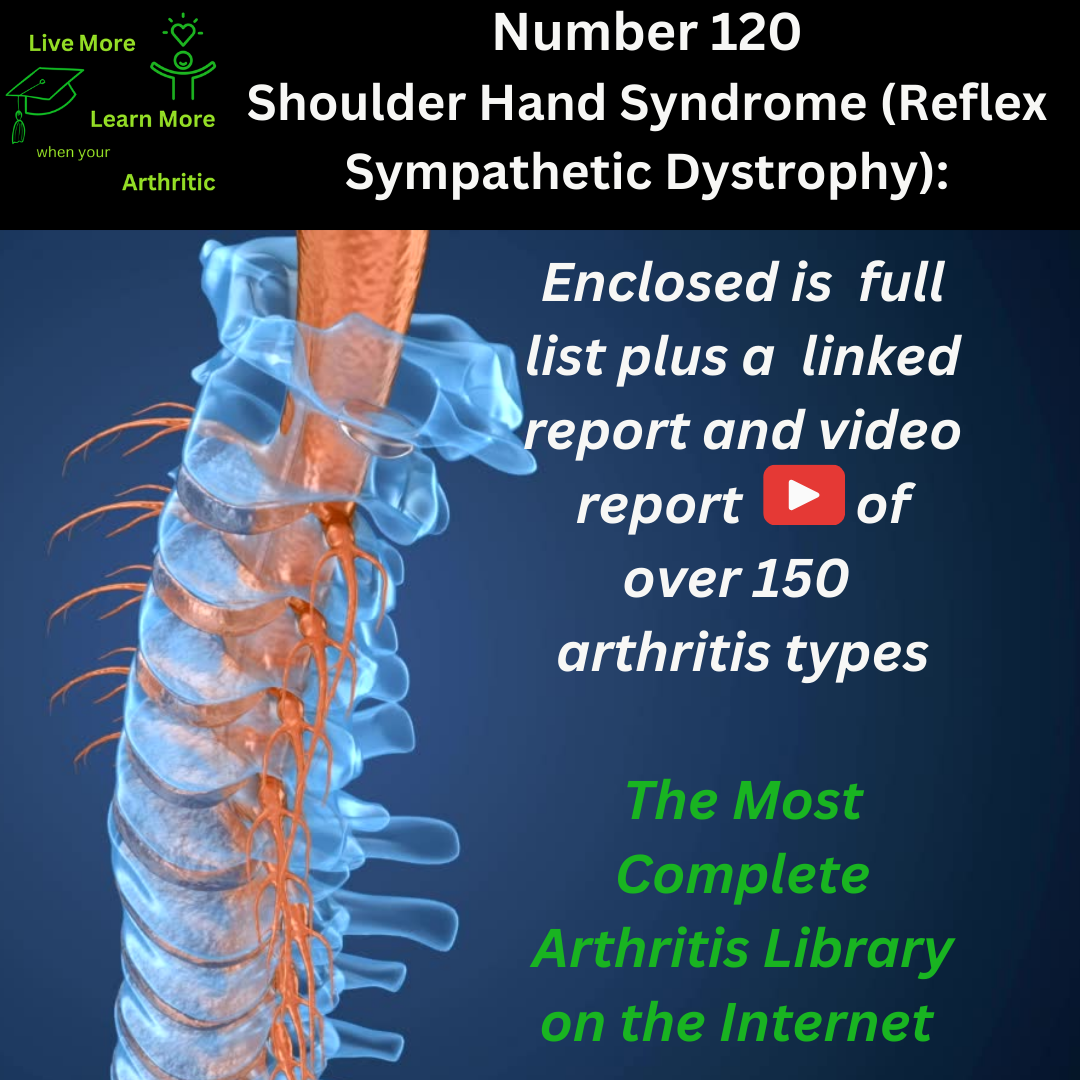
Shoulder Hand Syndrome (Reflex Sympathetic Dystrophy): Number 120 of around 150 types of Arthritis
Understanding Shoulder Hand Syndrome (Reflex Sympathetic Dystrophy)
Hand Syndrome, also known as Reflex Sympathetic Dystrophy (RSD) or Complex Regional Pain Syndrome (CRPS), is a debilitating condition characterized by chronic pain and inflammation, primarily affecting the extremities, particularly the hands and wrists. This syndrome can significantly impact a person’s quality of life due to its persistent symptoms and complications.
 Affected Body Parts and Symptoms
Affected Body Parts and Symptoms
Hand Syndrome predominantly affects the hands, wrists, and sometimes extends to the arms and shoulders. Symptoms include intense pain, swelling, changes in skin temperature and color, stiffness, and decreased range of motion. The affected limb may also become hypersensitive to touch or temperature variations.
Description and CausesHand Syndrome is believed to arise from a dysfunction in the nervous system, particularly involving the sympathetic nervous system, which regulates involuntary bodily functions. The exact cause is not fully understood, but it often follows trauma, surgery, or injury to the affected limb. The nervous system becomes hypersensitive, leading to exaggerated pain signals and inflammatory responses.
Onset and Risk Factors
Hand Syndrome can occur at any age, but it commonly affects individuals between 30 and 60 years old. Women are more frequently affected than men. Risk factors include previous traumatic injury, fractures, surgery, or conditions such as stroke or heart disease that affect blood flow and nerve function.
Complications and Impact
The complications of Hand Syndrome can be profound, including severe chronic pain, muscle atrophy due to disuse, joint stiffness, and psychological distress. Persistent inflammation and pain can impair daily activities and reduce overall quality of life.
Mechanism of Symptoms
The hallmark symptoms of Hand Syndrome, such as swelling and changes in skin color and temperature, are attributed to dysfunctional nerve signaling. The sympathetic nervous system becomes overactive, leading to excessive blood vessel constriction, inflammation, and pain perception.
Improving Quality of Life
Although Hand Syndrome can be challenging to manage, a proactive approach can significantly improve quality of life. Treatment may involve physical therapy to maintain joint mobility, desensitization techniques to reduce hypersensitivity, and psychological support to cope with chronic pain.
Possible Complications
Complications of Hand Syndrome include joint stiffness, muscle weakness, loss of function, and psychological conditions such as depression and anxiety due to chronic pain and disability. Long-term disability can impact social interactions and overall well-being.
Demographic Trends
Hand Syndrome commonly affects individuals between the ages of 30 and 60, with women being more susceptible than men. The condition may occur following trauma, surgery, or other medical procedures that disrupt nerve function and blood flow.
Individuals with Hand Syndrome may be at increased risk of developing other chronic pain conditions or psychological disorders due to the long-term impact of persistent pain and disability. Comprehensive care involving a multidisciplinary approach is essential for managing associated conditions effectively.
In summary, Hand Syndrome (Reflex Sympathetic Dystrophy) is a complex and challenging condition characterized by chronic pain and dysfunction of the nervous system. With early intervention, comprehensive treatment, and a proactive approach to managing symptoms and complications, individuals affected by this syndrome can achieve a higher quality of life and better cope with the challenges posed by this chronic pain disorder.


